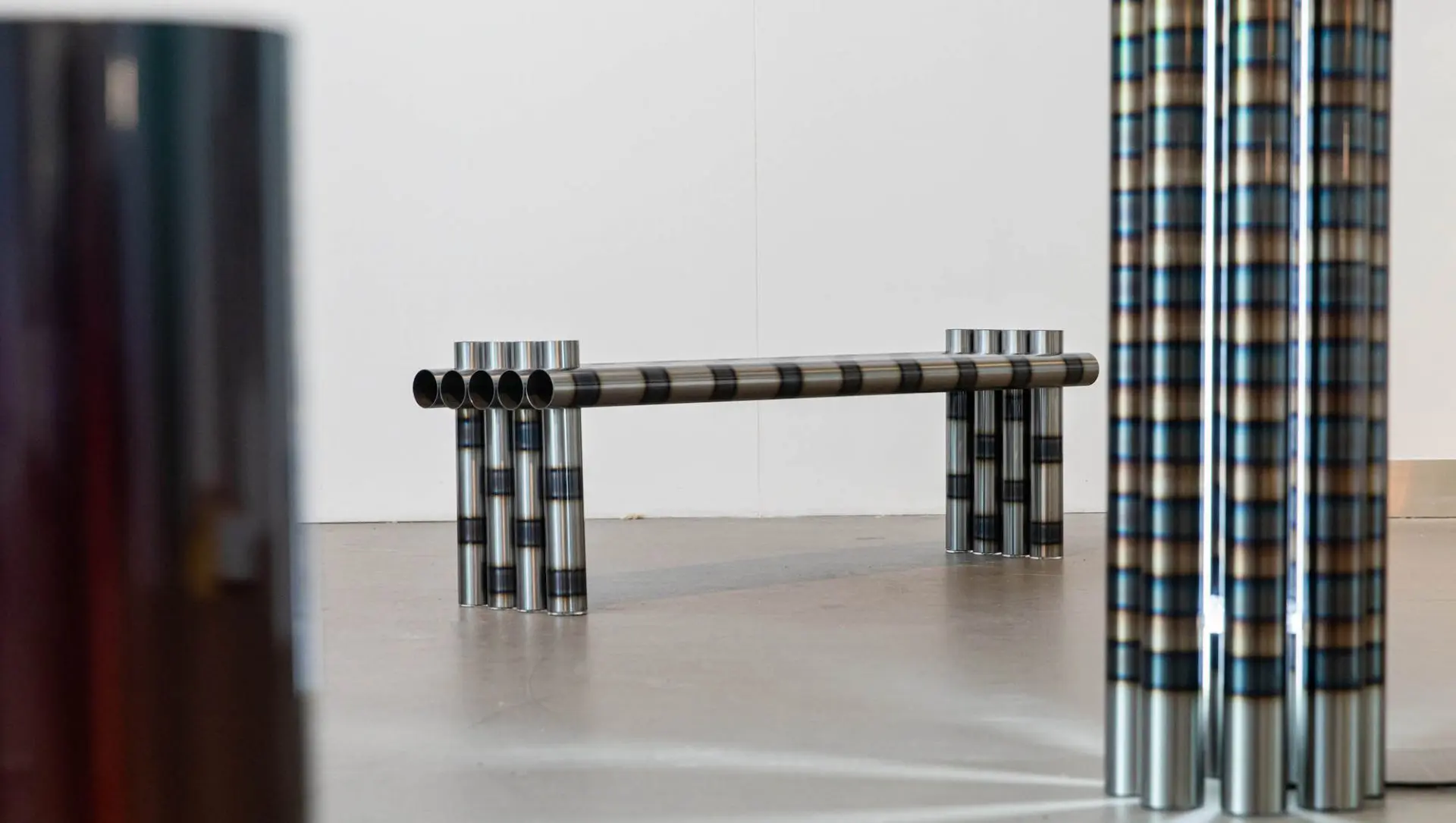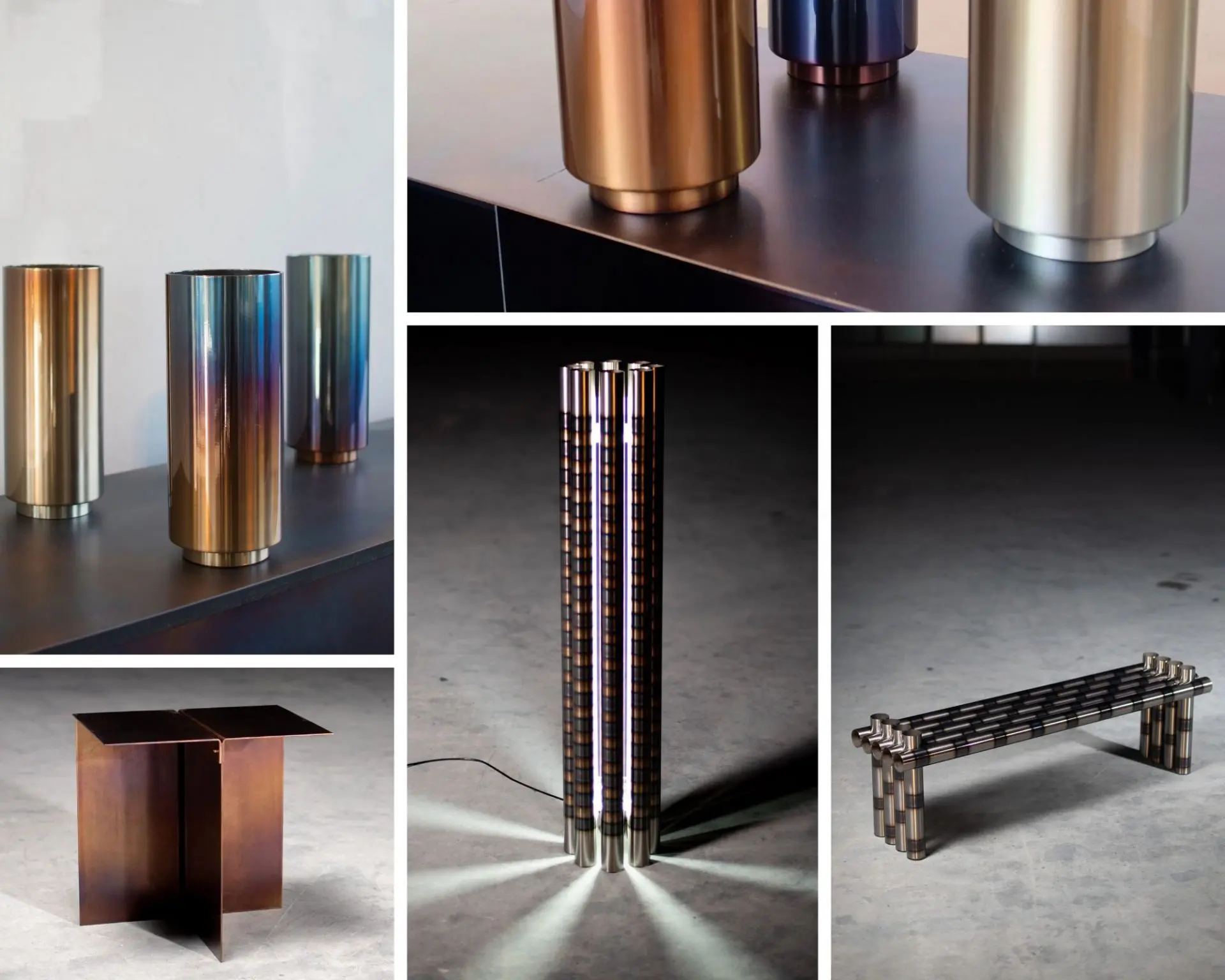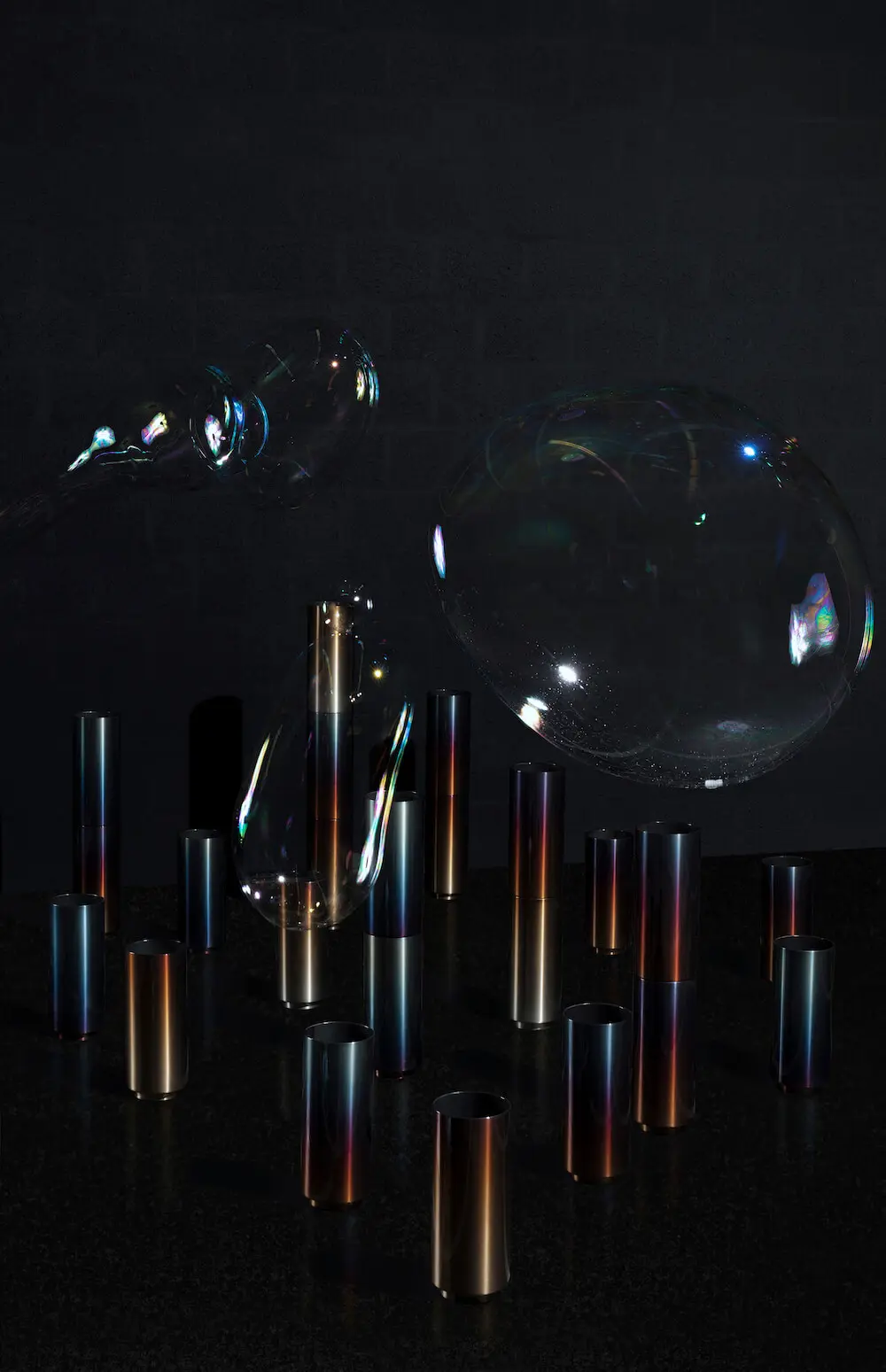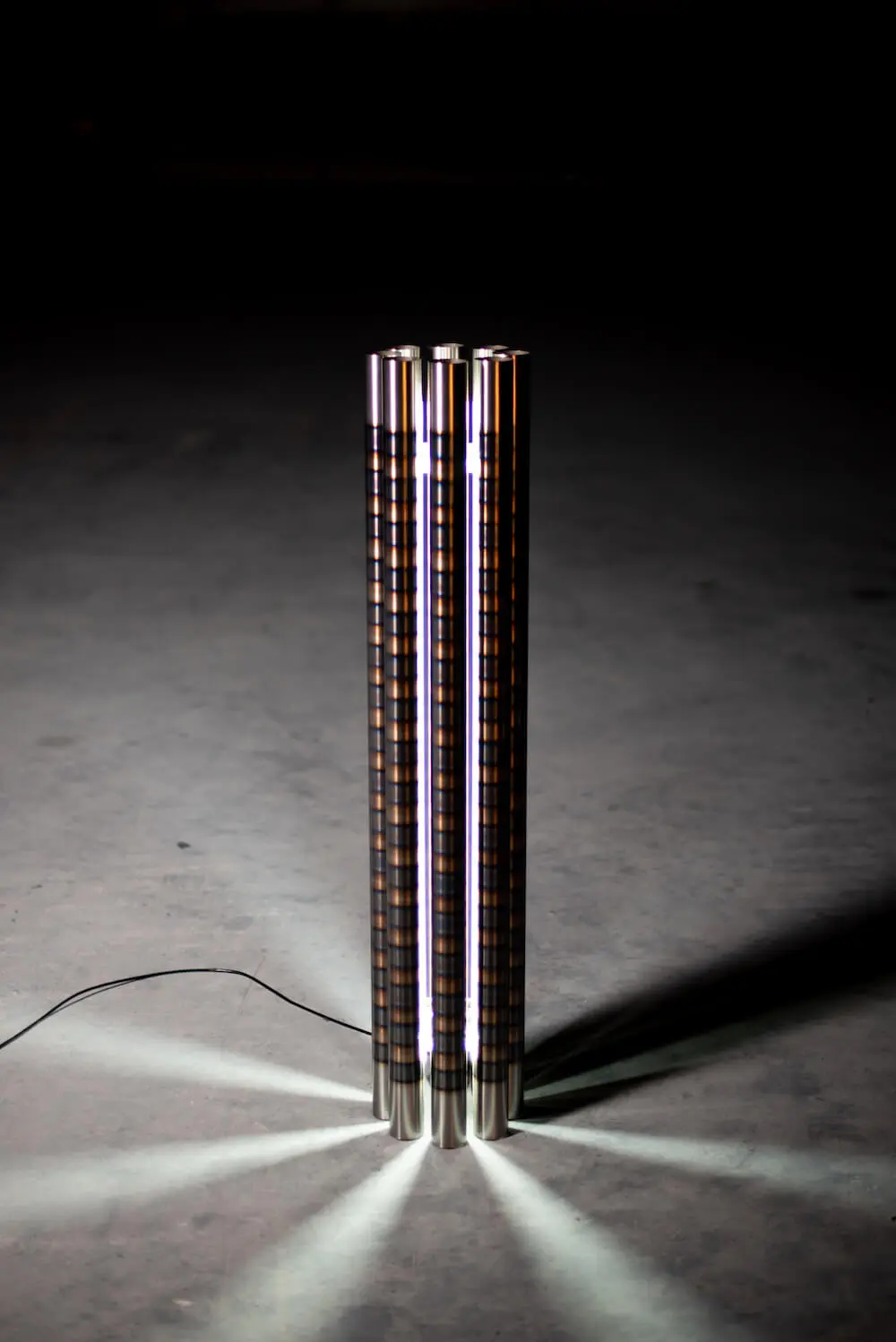Luuk Van Larrhoven “paints with a torch” to create iridescent furniture
Dutch designer Luuk Van Larrhoven burns metal to create iridescent furniture, which highlights the value of experimenting with unfamiliar materials and processes.

The designer’s Burned collection has been decorated using the color change reaction of metal when applying heat, resulting in a vivid spectrum of graduating tones.
The collection features lighting, lounge chairs, vases and cabinets made of steel elements that have been tempered to create a film of iron oxide that reveals a rainbow of colours. First, there is a discoloration in the metal, a natural process that takes place when metal is heated.

Then, the colour settles as the metal cools with exposure to oxygen. It’s a delicate process that requires a lengthy period of experimentation in order to master its effects. “The most difficult thing is not to overshoot the colour you’re trying to create,” explains Laarhoven.
“Every temperature has its own color but when you see the colour you want, heat is still building up in the material and therefore the colour keeps changing.”

As a result, Van Laarhoven must predict how hot a specific spot is and how fast it needs to cool down to achieve the desired shade. “That is what makes testing and experimenting so important,” he adds. Over the course of eighteen months, the designer tried heating up different types of steel at a range of temperatures both mechanically and by hand.

“Depending on the type of metal, every temperature has its own range of colours. If the temperature difference is small, the colours will appear more monochrome. When the difference in temperature is bigger, more colours present themselves.”

Burned highlights the value of experimental design
Applying heat to metal is a time-honoured technique used to construct or shape the material, which Van Laarhoven uses to alter the decorative quality of his designs. He describes the process like “painting with a torch”, using a tight compartment to channel the flame and apply the heat slowly and more accurately.










